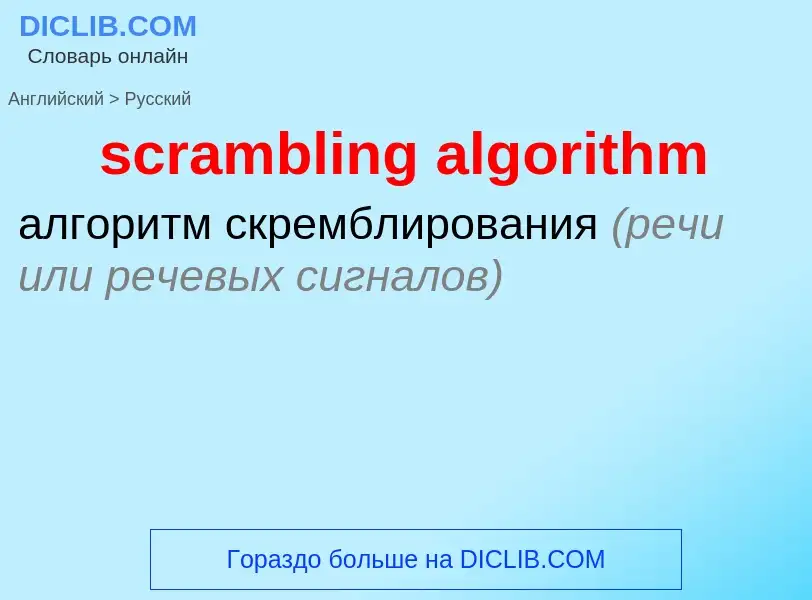Geben Sie ein Wort oder eine Phrase in einer beliebigen Sprache ein 👆
Sprache:
Übersetzung und Analyse von Wörtern durch künstliche Intelligenz ChatGPT
Auf dieser Seite erhalten Sie eine detaillierte Analyse eines Wortes oder einer Phrase mithilfe der besten heute verfügbaren Technologie der künstlichen Intelligenz:
- wie das Wort verwendet wird
- Häufigkeit der Nutzung
- es wird häufiger in mündlicher oder schriftlicher Rede verwendet
- Wortübersetzungsoptionen
- Anwendungsbeispiele (mehrere Phrasen mit Übersetzung)
- Etymologie
scrambling algorithm - Übersetzung nach russisch
ALGORITHM
DVB-CSA; Common scrambling algorithm
scrambling algorithm
алгоритм скремблирования (речи или речевых сигналов)
algorithm
SEQUENCE OF INSTRUCTIONS TO PERFORM A TASK
Algorithmically; Computer algorithm; Properties of algorithms; Algorithim; Algoritmi de Numero Indorum; Algoritmi de numero indorum; Algoritmi De Numero Indorum; Алгоритм; Algorithem; Software logic; Computer algorithms; Encoding Algorithm; Naive algorithm; Naïve algorithm; Algorithm design; Algorithm segment; Algorithmic problem; Algorythm; Rule set; Continuous algorithm; Algorithms; Software-based; Algorithmic method; Algorhthym; Algorthym; Algorhythms; Formalization of algorithms; Mathematical algorithm; Draft:GE8151 Problem Solving and Python Programming; Computational algorithms; Optimization algorithms; Algorithm classification; History of algorithms; Patented algorithms; Algorithmus
algorithm noun math. алгоритм algorithm validation - проверка правильности алгоритма
algorithmic method
SEQUENCE OF INSTRUCTIONS TO PERFORM A TASK
Algorithmically; Computer algorithm; Properties of algorithms; Algorithim; Algoritmi de Numero Indorum; Algoritmi de numero indorum; Algoritmi De Numero Indorum; Алгоритм; Algorithem; Software logic; Computer algorithms; Encoding Algorithm; Naive algorithm; Naïve algorithm; Algorithm design; Algorithm segment; Algorithmic problem; Algorythm; Rule set; Continuous algorithm; Algorithms; Software-based; Algorithmic method; Algorhthym; Algorthym; Algorhythms; Formalization of algorithms; Mathematical algorithm; Draft:GE8151 Problem Solving and Python Programming; Computational algorithms; Optimization algorithms; Algorithm classification; History of algorithms; Patented algorithms; Algorithmus
математика
алгоритмический метод
Wikipedia
Common Scrambling Algorithm
The Common Scrambling Algorithm (CSA) is the encryption algorithm used in the DVB digital television broadcasting for encrypting video streams.
CSA was specified by ETSI and adopted by the DVB consortium in May 1994. It is being succeeded by CSA3, based on a combination of 128-bit AES and a confidential block cipher, XRC. However, CSA3 is not yet in any significant use, so CSA continues to be the dominant cipher for protecting DVB broadcasts.


![Alan Turing's statue at [[Bletchley Park]] Alan Turing's statue at [[Bletchley Park]]](https://commons.wikimedia.org/wiki/Special:FilePath/Alan Turing.jpg?width=200)




